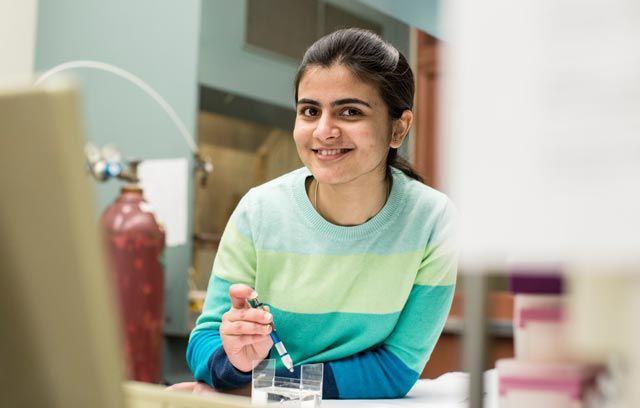It was a straightforward experiment: Aditi Chakrabarti dropped solid spheres of metal and ceramic, 2 to 5mm in diameter, into a gel material. She watched the spheres sink until they became stagnant in the polyacrylamide gel, which is a soft elastic solid. The tiny particles then began to interact with each other, forming close-packed structures, in a process resembling crystallization.
After experimenting further with combinations of copper, steel, glass and ceramic spheres, Chakrabarti discovered that the forces governing the movements of the particles were the result of the cooperative effects of surface tension, elasticity and gravity.
The phenomenon, says Chakrabarti, a Ph.D. candidate, had not been seen or predicted before. She and Manoj Chaudhury, professor of chemical engineering, reported the discovery in Langmuir.
Scientists have long known that objects can interact because of the mechanical distortion of the medium that surrounds them as well as physical forces such as elasticity and gravity. A particle inside Chakrabarti’s gel does not displace the gel as it would water. Instead, the tiny sphere experiences not only gravity but also elastic forces as the soft solid of the gel stretches around and over it.
After watching a single, 2mm-sized copper particle sink and reach equilibrium inside the gel, Chakrabarti dropped a second particle a few millimeters away and watched it sink to the same depth and stop. The particle then started moving toward the first sphere until it made contact and created a dimer, a structure of two identical units.
When a third particle was released, it moved toward the dimer and formed a triangular structure. A fourth particle formed a tetrahedron. Chakrabarti continued adding copper spheres, and they formed a large cluster on one side of the gel screen.
She then formed a second cluster on the other side of the gel. The two clusters drew together, made contact and reorganized into one closepacked structure.
“They became kind of clenched together,” says Chakrabarti, “almost like crystallization. People have done lots of 2D assembly in liquids. But 3D assembly in this kind of soft gel is new.”

